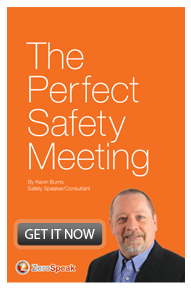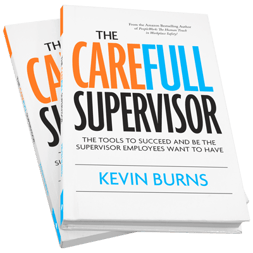If safety meetings are not fun or engaging for attendees, they won’t remember what was discussed. So streamline your meetings in 2018.

Part of the overall strategy for safety communication and meetings should be a requirement to avoid mind-numbing and boring your people whenever possible. Maybe that idea a lone could be your personal mission for 2018. Look, we know it's tough especially when the subject-matter or presenters are boring. So the idea is to find ways to step outside the 'boring and predicatble" safety meeting.
Make it a plan for employees to engage and stay sharp. That means getting rid of boring statistics, figures, graphs and performance chart that you can lay your hands on at them in one meeting. Put it this way, if your safety meeting presentation includes charts and graphs, you're out of ideas. And more importantly, out of touch.
Once upon a time, you attended a boring safety meeting. But that doesn't give you license to do the same to your crews. PowerPoint is the seventh pit of hell. It's Corporate Karaoke – the word-for-word, sing-along regurgitation of every thought in a presenter’s head posted on a slide in tiny font type. Your people disengage from the safety meeting the moment you put up a slide with seven lines of type with some boring blue background.
You've got to make safety engaging. If it’s not fun or engaging for attendees, they won’t remember it. When people engage, they remember. That's a key learning nugget for you to take into the New Year and to help you plan better safety meetings.
Here are three must-dos for building better safety meetings that engage:
1People Engage With Other People - Stop using PowerPoint as the message. It is not the message. It is a supplementary medium to help you carry a more powerful message, but it is no substitution for the human element of engaging people.
People don’t engage with PowerPoint slides. They engage with other people (tweet this).
Too many times we've heard safety meeting organizers say, "PowerPoint helps keep me organized." That means PowerPoint is for lazy people – people who won’t take the time to be very clear about their topic for this meeting and what they want to have happen as the result of the meeting. Create a safety meeting that engages the hearts and minds of employees. Stop walking into your safety meetings with a shopping list of thoughts you think need to be in the presentation. Most don’t.
Engage your people. Engage hearts and minds. When you capture hearts and minds, you engage them in the same way you want them to engage themselves. If you believe it, they’ll believe it. If they believe it, they will act on it.
2Keep It Simple. One Idea At A Time - Safety meetings are crucial to the ongoing safety of your employees. But you can't just stick any old thing in your safety meetings and think "well, we had our meeting." It's not about filling a time-slot. It's about making sure that you advance a new idea and call-to-action. Your organization needs to become better, not just better-informed.
Safety people and supervisors need to step up and take control of who and what gets exposure to the minds of the employees - and protect the workers from being exposed to conflicting pieces of information or too much information at any one time.
Getting others on-board with simplifying their presentations to be more dull-resistant should be easy: planning. If you can plan a safety procedure, an escape or a marshalling area, then there should be no problem planning a safety meeting. And you must plan it: it's theme, points of discussion, content and consistency of message. And the message needs to be tight across everyone who will present.
Shorten the meeting down to one thought at a time. Consider sticking all of the supplementary information (anything you would stick on those tiny lines of type on PowerPoint slides) into newsletters, emails, handouts, etc.
3Create A Call-To-Action - What do you want your people to do differently at the end of the meeting? B specific about the step or action that you would like them to take. Then, once you've figured out what you want them to do, you can start to plan what will be covered in your meeting. Start your planning from the end and work backwards. Figure out what you want them to do and then point everything coverd in the meeting to support that happening. Every point of discussion should go to support the call-to-action. Make sure each slide, point-of-discussion, speech, instruction or handout supports that one thing.
 You don't "fill" a safety meeting with stuff. You have a safety meeting with a specific purpose in mind.
You don't "fill" a safety meeting with stuff. You have a safety meeting with a specific purpose in mind.
It's not enough to know the information. They must now do something with the information. That's why you start with a call-to-action in planning and work backwards from there.
These are the three biggest strategies that will increase the engagement and participation in your safety meetings. And if you're looking for fresh ideas at a safety meeting or event in 2018, have a look at how I've helped make a difference at safety meetings in the past.
Kevin Burns helps safety departments, safety committees, management and front-line supervisors to accelerate safety programs. Through consulting services to create a personalized plan to accelerate safety teamwork, or a safety meeting speaking presentation to rally your employees around safety, Kevin helps improve engagement and teamwork in safety.
Kevin Burns is a management consultant, speaker and author of “PeopleWork: The Human Touch in Workplace Safety.” He believes that the best place to work is always the safest place to work. www.KevBurns.com
© Can Stock Photo

